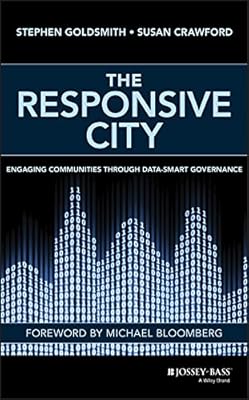📕 subnode [[@bbchase/the responsive city]]
in 📚 node [[the-responsive-city]]
- Author:: [[Stephen Goldsmith and Susan Crawford]]
- Full Title:: The Responsive City
- Category:: [[books]]

-
Highlights first synced by [[readwise]] [[September 2nd, 2020]]
- Leadership is essential because the new type of public servant we describe must break down three barriers to progress that business-as-usual bureaucratic government imposes. First, there is a narrow and technical definition of what constitutes good work by government employees; second, the vertical silos of the usual city government's organization block the free flows of ideas and information, making it ill suited to problems that don't fit into the “verticals”; and, third, the bureaucracy orients itself to performing and measuring activities (potholes filled, cases processed) rather than solutions to problems. To benefit from digital technology, in other words, government must get out of its own way. That requires that it set aside some of the structures, traditions, and habits that have accumulated over the past 125 years. (Location 256)
- These large-scale meetings have long been a standard part of big-city politics. Occasionally they generate insights, but mostly they produce performances. Although the advocates are officially speaking to public officials, they are really talking through them. The speakers' real goal is to impress and move the audience to support their cause, not to work in any constructive way with the public servants who listen to them. (Location 1354)
- officials who did not listen, being yelled at by advocates who were not addressing them anyway. (Location 1361)
- it requires five characteristics: well-visualized data, savvy intermediaries, a governmental platform that works, personalized responses from city hall, and resulting real-time information. (Location 1412)
📖 stoas
- public document at doc.anagora.org/the-responsive-city
- video call at meet.jit.si/the-responsive-city